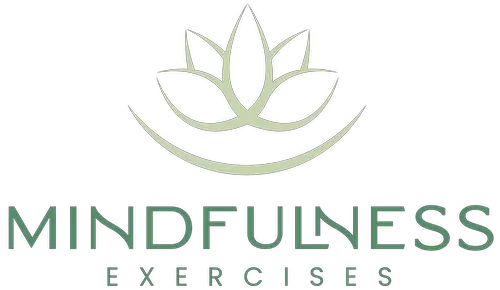
What is Qigong?
Qigong is an ancient Chinese practice that involves gentle movements, breathing techniques, and meditation to cultivate life energy or qi. This complementary health approach has been used to promote mental, spiritual, and physical health for over 5,000 years. Qigong is a form of Chinese medicine that is based on the fundamentals of meditation and energy cultivation, emphasizing the flow of energy throughout the body.
Through daily practice, qigong can improve blood flow, reduce stress levels, and enhance the quality of life in individuals with chronic diseases such as heart disease, chronic pain, and long-term stress. In this article, we will explore the benefits of qigong and the techniques involved in this practice.
In this article, we will discuss the benefits of combining qigong and meditation, the forms of qigong used in meditation, and how it can improve your quality of life.
What is Meditation?
Meditation is a powerful practice that has been around for centuries. It involves focusing your attention on a particular object or activity to achieve a sense of calm and inner peace. It is a form of mental exercise that has numerous benefits for both your mind and body. Some of the key characteristics of meditation include focusing on your breath or a particular sound, being fully present, in the moment, and letting go of distracting thoughts.
There are several forms of meditation that differ in terms of their goals and techniques.
Mindfulness meditation involves paying attention to your breath and the sensations in your body.
Transcendental meditation uses a mantra or sound to help you enter a deep state of relaxation.
Loving-kindness meditation involves sending positive thoughts and energy to yourself and others.
Each form of meditation has its own unique benefits and can be practiced in different ways to suit your needs.
Research has shown that meditation can have numerous positive effects on mental and physical health. Regular meditation practice has been linked to lower levels of stress, anxiety, and depression, as well as improvements in mood and emotional well-being.
Meditation can also improve immune function and increase brain function and cognitive performance. These scientific studies demonstrate how meditation can improve overall well-being.
Meditation Qigong – Benefits of Combining Qigong & Meditation
Combining qigong and meditation is not only a great way to calm the mind, but it also offers a range of physical benefits to keep your body healthy too. Qigong involves gentle movements that are aimed at cultivating life energy, also known as qi or chi.
It helps in energy flow throughout your body by improving blood pressure and blood flow. Meditation focuses on focused attention and relaxation response to improve emotional and mental well-being, which is beneficial for those feeling stressed or experiencing chronic pain.
Mental Health Benefits Qigong and Meditation
It is well known that mental health is an integral part of our overall well-being. Practicing qigong and meditation together has been found to positively impact our mental health and well-being. Both practices involve gentle movements, breathing techniques, and mental focus that can help reduce stress levels, promote relaxation, and increase our sense of mindfulness and self-awareness.
One of the significant mental health benefits of practicing qigong and meditation together is its ability to reduce stress levels. Chronic stress can take its toll on our mental and physical health leading to various health problems. However, studies have shown that regular practice of qigong and meditation can help reduce stress levels and improve our quality of life.
Moreover, qigong and meditation have also been found to reduce symptoms of anxiety and depression by promoting an overall sense of calmness and relaxation. The slow movements and breathing exercises involved in qigong help in regulating the heart rate and the flow of energy throughout the body, improving our mental and physical health.
Another significant benefit of practicing qigong and meditation together is its ability to increase our mindfulness and self-awareness. By focusing on our breath and the movements of our body, we become more aware of our thoughts and emotions, leading to better emotional regulation and a more positive outlook on life.
Physical Health Benefits Qigong and Meditation
When it comes to physical health, the benefits of practicing qigong and meditation are numerous. Research has shown that these practices can improve blood pressure and blood flow, boost the immune system, and increase muscle strength and flexibility.
One study conducted on qigong found that regular practice can improve blood pressure levels in individuals with hypertension, leading to a reduction in the risk of heart disease and stroke.
Furthermore, qigong has been shown to boost the immune system by regulating immune function and reducing inflammation in the body. This can lead to a reduced risk of contracting infections and illnesses.
Aside from cardiovascular health and immune function, practicing qigong and meditation can also help improve muscle strength and flexibility. By practicing slow, deliberate movements and breathing techniques, you can increase blood flow to muscles, improve joint mobility, and reduce risk of injury.
Additionally, studies have found that regular qigong and meditation practice can reduce chronic pain, such as that associated with conditions like arthritis.
Qigong and meditation can also be used as complementary health approaches for chronic diseases such as heart disease. By reducing stress, improving immune function, and promoting healthy blood flow and cardiovascular function, these practices can help reduce the risk of heart disease and improve outcomes for those already living with the condition.
Spiritual Wellbeing Benefits Qigong and Meditation
Qigong and meditation have been found to offer numerous benefits in terms of spiritual well-being. These practices are known to promote inner peace, spiritual growth, and better connection with the world around us through the cultivation of mindfulness and present-moment awareness.
Mindfulness is a key component of both qigong and meditation, involving the practice of being fully present in the moment and observing our thoughts, feelings, and surroundings without judgment or attachment. Over time, this practice can help individuals develop a deeper sense of inner peace by reducing anxiety and stress and promoting a positive mindset.
The regular practice of qigong and meditation also helps to cultivate a deeper connection with the energy of the world around us. Through the gentle movements, breathing techniques, and energy cultivation practices of qigong, individuals can learn to harness and direct the flow of energy within their bodies and connect with the larger energy field of the universe.
Qigong and meditation can also promote spiritual growth by helping individuals develop a deeper understanding of themselves and their place in the world. These practices encourage individuals to look inward, examining their thoughts and emotions and exploring their core beliefs and values. By developing a greater awareness of their own inner workings, individuals can develop a more profound sense of empathy, compassion, and connection with others.
Types of Exercise Qigong & Meditation Practices
Qigong and meditation are ancient practices that have been used for centuries to promote physical, mental, and spiritual health. There are a variety of different types of qigong and meditation practices that individuals can explore, each with its own unique benefits and techniques. Whether you’re new to these practices or a seasoned practitioner, there is sure to be a form of qigong and meditation that resonates with you and supports your overall health and well-being.
Gentle Movements in Qigong
Qigong is a practice that involves gentle movements that aim to cultivate and improve the flow of energy throughout the body. These movements are characterized by their slow pace and mindful execution, emphasizing the importance of intention and focus in achieving a smooth flow of energy.
The gentle movements of Qigong are crucial to the practice as it plays a vital role in promoting both physical and mental well-being. These movements are designed to improve posture, flexibility, balance, and coordination while also reducing stress levels in the body.
It is important to perform these movements slowly and with intention to allow for a smooth flow of energy throughout the body. This allows for the full benefit of the movements to be felt, maximizing the positive effects on both physical and mental health.
Some examples of gentle movements in Qigong include the “sway” technique, which involves rhythmic side-to-side movements that promote spinal alignment and loosen the hips. Another common technique is “wave hands like clouds,”which encourages fluidity and coordination in the upper body.
Active Qigong is another aspect of the practice that involves incorporating movements that work on muscle strength and coordination alongside breath work and energy flow. This is particularly helpful in promoting better health outcomes for those with chronic diseases such as heart disease and chronic pain.
Slow Movements in Qigong
In qigong, slow movements are crucial in promoting health and well-being. Slow and deliberate movements allow the body to move in a relaxed and controlled manner, creating a smooth flow of energy throughout the body. This not only benefits the physical body but the mind as well.
Slow movements in qigong lead to increased relaxation, allowing the body to release tension and stress. This is important as many health issues are aggravated by stress. By practicing slow movements, one can reduce stress levels in the body, leading to improved overall well-being.
Additionally, practicing slow movements in qigong allows the mind to focus on the movements, cultivating mindfulness and mental clarity. This creates a meditative state of mind that can benefit various aspects of life, including work, relationships, and self-awareness.
Some common slow movements practiced in qigong include the crane movement, which involves slow and graceful arm movements that promote relaxation and mental focus.
Become a mindfulness teacher!

https://meddna–mindfulnessexercises.thrivecart.com/mindfulness-teacher-training-installment/
Qigong vs tai chi
Qigong and Tai Chi are both ancient Chinese practices that have been used for centuries to promote health and well-being. Both involve gentle movements, deep breathing, and meditation. In general, they are both forms of mind-body exercise that focus on the harmonious integration of body, mind, and spirit.
The main difference between Qigong and Tai Chi is the type of movements.
1. Origin: Qigong originated in China around 4,000 years ago, while Tai Chi originated in the 17th century as a martial art.
2. Movement: Qigong focuses on fluid, repetitive movements that aim to improve the flow of qi (life force energy) through the body, while Tai Chi focuses on a series of slow, coordinated movements that flow together in a continuous pattern.
3. Breathing techniques: Qigong emphasizes deep, controlled breathing techniques to help regulate the body’s energy flow, while Tai Chi includes more relaxed, natural breathing.
4. Meditation: Qigong includes more emphasis on meditation and mindfulness practices, while Tai Chi focuses more on physical movements and their martial arts applications.
5. Health benefits: Qigong has been used for centuries as a healing practice in Traditional Chinese Medicine and is thought to improve specific health conditions. Tai Chi is also used for health benefits, but its focus on martial arts movements and self-defense provides additional benefits that are more focused on developing strength and balance.
6. Purpose: Qigong is practiced to cultivate and enhance the body’s energy and to improve overall health and well-being, while Tai Chi is practiced for both health and martial arts applications.
7. Complexity: Qigong is generally easier to learn and execute than Tai Chi, which can require more time and practice to master due to the diverse range of movements and their martial arts applications.
8. Equipment: Qigong can be practiced with little to no equipment, while Tai Chi often requires specialized shoes and clothing.
Breathing Techniques for Meditation and Qigong
Breathing techniques are a fundamental part of meditation, helping to calm and center the mind and body. By focusing on the breath, individuals can distract themselves from their thoughts and reduce stress levels. Additionally, by using different techniques, the breath can even be used to promote relaxation or energize the body.
One common breathing technique used during meditation is diaphragmatic breathing. This practice involves filling the lungs from the bottom up and using the diaphragm, which can help to reduce anxiety and promote relaxation. Diaphragmatic breathing is also known as belly breathing, and it can be practiced in a seated or lying position.
Another technique, known as laogong breathing, involves deep inhalations and exhalations through the palms of your hands. Laogong breathing is thought to help cultivate energy flow within the body and is often used within qigong and tai chi practices.
In addition to diaphragmatic and laogong breathing, there are several other techniques that can be used during meditation, such as alternating nostril breathing, laughing breath, and ocean breath.
Alternating nostril breathing involves closing one nostril and breathing in and out through the other nostril before switching sides. This technique is often used for balancing the right and left sides of the brain.
Laughing breath is a technique that involves exhaling with a short, sharp burst of laughter. This technique is great for releasing tension and stress and can lead to a more positive mood. Ocean breath is a deep, continuous breathing technique that mimics the sound of waves. It’s often used to promote a sense of calm and relaxation.
Practicing Qigong & Meditation Together
Preparing to Practice
Qigong and meditation are two practices that can bring remarkable benefits to both your physical and mental health, but only if approached with the right mindset and discipline. Preparing yourself before diving into these practices can make all the difference in reaping their full benefits.
To begin, clear your mind and find stillness within yourself. You can achieve this through simple meditation techniques such as focusing on your breath. By bringing your attention to your breathing, you can turn off the mental chatter and distractions that can inhibit deeper practice. This will also help you enter a more relaxed state, which is crucial for effective qigong and meditation.
In addition to meditation, body shaking can also help prepare your body for qigong practice. Body shaking is a simple exercise where you stand with your feet shoulder-width apart and let your body shake naturally from side to side. This will loosen up any muscle tension and allow the energy to start flowing throughout your body.
When practicing qigong, it’s crucial to make the practice your own by modifying it to suit your body and mindset. You can adjust the visualization or focus on specific areas of the body depending on what feels right for you. Find a comfortable position for your practice, with your feet flat on the floor, and focus on the flow of energy throughout your body.
Discipline is also a key factor in preparing for qigong and meditation. Daily practice can yield long-term benefits to your health and well-being. Incorporating qigong into your daily routine can help lower your stress levels, improve blood pressure regulation, and even reduce chronic pain.
However, it’s important to listen to your body and not push past your limits. Consistent practice combined with self-awareness and mindfulness is the best way to achieve the maximum benefits of this form of meditation.
This routine from Yoqi Yoga and Qigong is a great place to begin your Qigong journey. This 30-minute routine guides you through (and explains!) a set of common qigong movements and breathing techniques.
Anchor Text: Yoqi Yoga and Qigong
External Link: https://youtu.be/IyINAjEoTIs
In summary, preparing before practicing qigong and meditation is crucial to achieve maximum benefits. Mindset, discipline, and modifications can all help you prepare for successful and fulfilling qigong practice. Remember, the key to effective practice is to listen to your body, be patient, and practice regularly.



